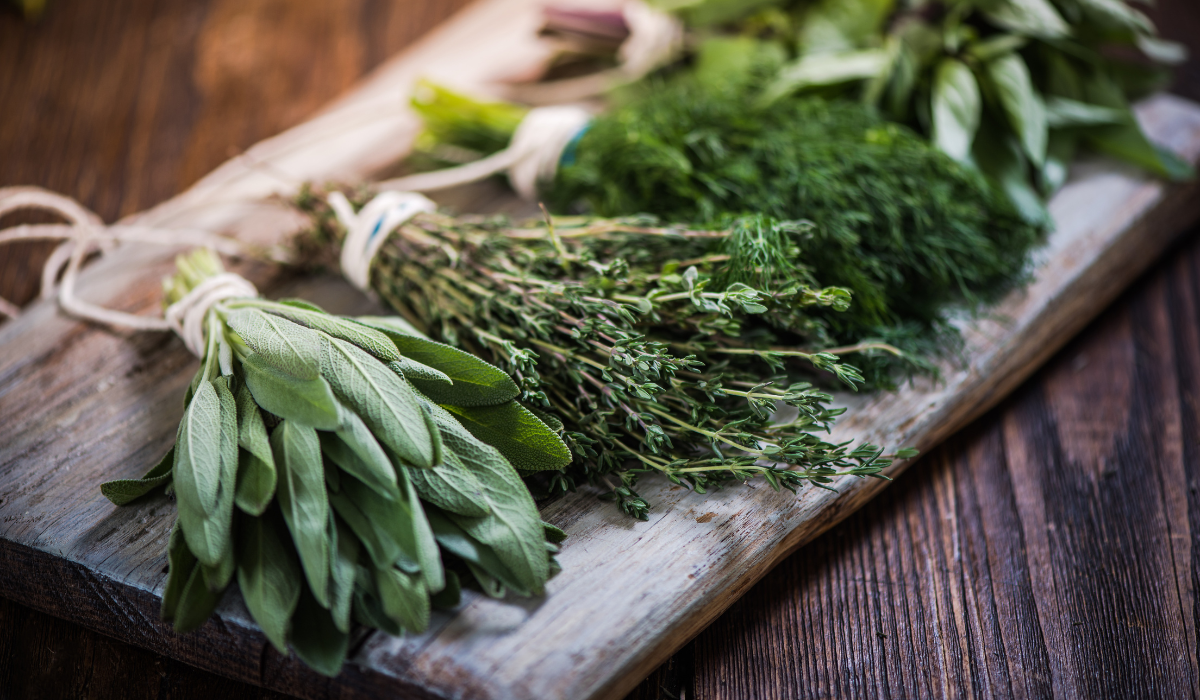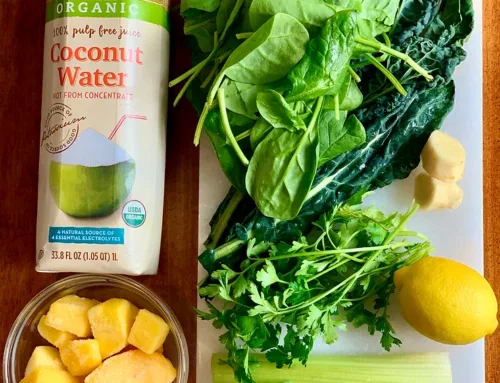
Using Herbs for Health
Fresh herbs are an easy way to add layers of flavor to your meals–and they also can pack a variety of health benefits. While you can buy dried or fresh herbs at the grocery store, consider growing your own in a windowsill garden or in a sunny spot on your patio or in your yard. Even for those who doubt their growing abilities—herbs are a wonderful (and fairly easy way) to get started! Below are some of our favorites:
Rosemary

Here in Charlotte, this herb is available year round in the garden. It’s a woodsy, aromatic and savory herb that pairs well with vegetables, fish, meats, and grains—it’s also one of the easiest to grow. Rosemary can over-power other flavors, so be sure to use it in moderation. Best of all, the phytochemicals can potentially help improve eye health, regulate liver function, and lower the risk of asthma. Try it in this classic salmon dish.
Thyme
Locally speaking, thyme will grow in all four seasons. This herb is a fragrant one that can stand up to long cooking times (think soups, stews, braises). In addition, it’s anti-inflammatory properties can help soothe coughs and chest congestion, and support overall intestinal health. Don’t forget to pull out the sprigs before serving your meal! Here’s an easy, flavorful side dish.

Basil

Nothing says summer like basil, perhaps because it’s abundant for us during those times; it needs the warm temps to grow. Many cultures value basil as a sacred plant and the word “basil” comes from the ancient Greek “basilikhon,” which means “royal.” Today, it’s the signature of Mediterranean cooking. Chock full of antioxidants and phytochemicals, basil can help reduce oxidative stress, lower your cholesterol and triglycerides, as well as improve your mood. Unlike thyme, basil’s flavor diminishes when cooked for too long, so sprinkle it in at the end of cooking or use it fresh, as in this pesto recipe.
Mint
Mint is a hardy perennial that will return each spring. A bright and cooling herb, the two most popular versions are peppermint and spearmint. Peppermint, because of its higher menthol content, is more suited for tea to help with indigestion or open a stuffy nose. Spearmint is more mild and the one used most often in cooking, dressings, and cocktails. Chop up fresh spearmint to add an unexpected sweetness to your next salad or try this dressing.
P.S. Mint spreads quickly so it’s best to plant it in a pot!

Dill

Dill is a biennial plant (it lives for 2 years) that prefers warm weather and is sensitive to light freezes and frosts. A distinct and delicate herb, dill should be chopped right before using and added towards the end of cooking or enjoyed fresh. Feel free to use the whole plant–stems, fronds, and even flowers. And when using this unique herb, feel good knowing it’s packed with flavonoids which help reduce the risk of heart disease. Try this cooling, summer side dish.
Hungry for more?
Check out this article about cooking with even more herbs.
This is for general informational purposes only and does not constitute any practice of medicine or professional health care services of any type. The use of information on this blog is at the user’s own risk. The content of this blog is not intended to be a substitute for professional medical advice, for diagnosis, or for treatment. Please seek the care of your health care professionals for any questions or concerns.



